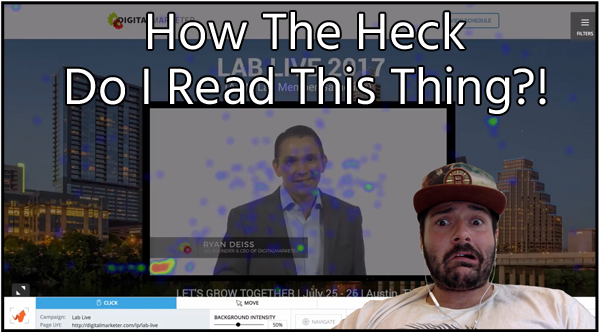Oh, traffic! You follow us everywhere except for the one place we want you: on our websites and blogs.
We do all the things we are supposed to do: we write regularly, we write in detail, and then we send out a tweet about what we have written.
Shouldn’t we have at least 5 million, active, engaged followers by now? Instead, we get stuck in traffic on the way home from work at night and sit by a traffic-less content structure all day.
What are we doing wrong?
Though some claim they can, I can’t help you avoid rush hour traffic on the road (if I knew how, my life would be a lot), but I can give you some tips on how you can use social media to start sending some traffic to the one place you want to have it.
For starters, here are 15 things to teach you How to Build Up Your Social Media Traffic in 15 Easy Moves.
Contents
#1 Post at the right time
The shelf life of a social media post is startlingly short.
Take a look at this infographic from Business to Community:
Basically, you can see from this that a Tweet lasts less than three hours, and most others aren’t that much better.
Knowing this, do you see how it can hurt you if you post at the wrong times? That three hours would pass and nobody would even be on to see your perfect Tweet.
So make sure that when you are posting, you are posting at the best time for that social media platform.
#2 Use images and videos
People are visual. In fact, according to HubSpot, 90% of info transmitted to the brain is visual. This should tell you something pretty important: if you want to attract people, you should probably be using pictures, charts, videos, and anything else that is visual.
Plus, with modern technology making it easier than ever to create images, there really is no excuse for you not to be doing it.
#3 Know your audience
Just like when you write your content, when you are creating a social media post, you have to know your audience. There are a variety of reasons this will help you.
You will know what social media platforms to use.
You will be able to figure out when to post.
You will know what to say.
The more you know about the people you want to attract, the more you will be able to target your posts to what they want and put those posts where they are more likely to see them. Thus, you will be more likely to see a whole lot of success from your social media efforts. So make sure you know who your audience is and what they are doing on social media.
#4 Use multiple channels
You know how sometimes you call to complain about the traffic on Highway Wherever You Are, and the person you are complaining to is also stuck in traffic but on Highway Wherever They Are? That’s because traffic is all over, not just on the road you are travelling.

Do you know what that means for your social media efforts? You need to be out there where the traffic is – where all the relevant traffic is, not just where one pocket of it is hanging.
This means that you need to using more than just Twitter or Facebook or whatever is your only source of social media right now.
Be on Vine, Pintrest, SnapChat, any new ones that pop up. Just, if your potential audience is there, make sure you are as well.
#5 Keep up with your analytics
Do you know what the best way to figure out what you are doing right and what you are doing horribly wrong? Monitor your efforts!
If you properly watch your analytics, you will be able to spot the things that are and are not working for you.
Did a blog post of yours get a ton of traffic from one social media post you did about it but not any from another? Examine why that might be the case.
What did you say in the post?
What posts were sent out around it?
What platform did you use?
When did you post it?
These questions will allow you to figure out the perfect formula for you, which means you can keep using that formula on subsequent posts. Just remember to keep watching the analytics. What works great today, might not work tomorrow.
#6 Follow the crowd
If you are travelling from Nowheresville down a back road to Never-heard-of-it Town, you aren’t going to see much traffic. You get stuck in traffic when you are in a popular place. That’s just common sense.
So how do you get traffic through social media? Clearly you need to put yourself in some traffic and redirect them towards you.
Figure out where the people are. Sure, maybe you heard about some great, new social media platform that might possibly be the next big thing next year, but if you put all your posts there and nobody else is there yet, you are not going to see much results.
While it is okay to try new things and take risks (see points seven and twelve), make sure you still put yourself front and center at places where people are.
#7 Don’t follow the crowd
I’m not contradicting myself here. Well, technically I am, but my reasoning makes sense. Do not just follow the crowd if you want your social media efforts to get you traffic.
Yes, place yourself where the crowds are. But once you are there, stand out. Honk your horn, let someone in instead of speeding up to make sure they can’t pass, don’t …. Let’s get off the road analogies here.
In the world of social media, there are a lot of people out there where you want to be. If you just copy them, you will never get noticed. That is why while you want to be with the crowd, you do not want to be a part of the crowd.
You need to take some risks and set yourself apart so that people will hear what you are saying even with all the rest of the noise going on around them.
Be creative.
Be unique.
Be risky.
#8 Be yourself
Social media is your time to connect to your audience. Not your time to sell to them. In order to do this, though, you have to be connectable. You do those by being a person, and by being a unique person at that.
Have a sense of humor.
Have opinions and feelings.
Admit your mistakes.
Don’t be all work, all the time.
P.S., being yourself does not and should not mean being unprofessional.
#9 Use the 4-1-1 rule
How often do you tune into the All Ads All the Time channel? If you are like me and pretty much everyone else, then your answer here is never. People don’t like ads. However, if you give them a good enough show, they might catch some of your ads along the way – even with DVRs trying to take even that little bit of advertising away.
Social media is no difference. If all your social media channels do is advertise your blog posts, products, etc., people just aren’t going to tune in to you. So to make your social media work, try using the 4-1-1 rule. It was originally intended for Twitter, but you can use it for all of your social media.
Basically, all it says is that for every self-promotional post you create on social media, you need to create four posts on relevant, original content created by someone else and one similar retweet or repost. That way, your social media handles are actually useful to your readers.
#10 Give just the right amount away
While it gets annoying, do you want to know why click bait sometimes works? Because it offers just enough intrigue to make people want to know more without giving away so much that there is no need to click on it.
Take these three examples I just created for the same fake article:
Man Sentenced to Jail
Police Send Mark Smith to Jail Today for Disrupting the Peace After Playing Loud Music in Quiet Neighborhood
You Won’t Believe the Reason Mark Smith Was Sent to Jail!
Now, I’m not trying to say any of these off the very top of my head are good titles. However, which of these would you most likely click on? I’d guess the third.
After all, the first does not give enough information to entice you. A man went to jail. So what? Why do you care?
The second tells you everything you need to know. The who? Mark Smith. The what? He went to jail. The when? Today. The where? Jail, quiet neighborhood. The why? For disrupting the peace. The how? Playing loud music and being sent to jail by the police. What more do you need to know? There is no need to click.
The last one tells you this is more than a normal story, but it doesn’t give you the reason why.
Your social media posts should do that. Intrigue, but don’t spoil.
#11 Be consistent
If every once in a blue moon you think to yourself, “Hey. I should probably go Tweet something today,” then you probably won’t see much effect in it. In order to really build up a following, and then get that following back to your blog or website, you need to be consistent.
Post regularly. BufferApp created a great infographic showing just how often you should post on various social media platforms:

Add to this LinkedIn, where it is recommended that you post once every work day, and Instgram, where you should post twice a day, and you see why regular posting is so important.
#12 Start and participate in conversations
Social media is all about communication. If you want to do it well, then you have to increase your engagement by starting and being part of conversations and then continuing conversations once they have started.
Think of that person that I know you know that never lets you get a word in edgewise. It’s always, “Me, me, me, me, me …” with them. Do you want to keep listening to whatever it is they are still at this moment probably talking about even though you were talking to them about it like a week ago? I’m guessing not.
So don’t be that person on social media. Instead, be a social media conversationalist.
Ask questions.
Respond to people.
Retweet things they say.
You know: all those things you’d be doing if you were talking to someone IRL.
#13 Be trustworthy
The best advice I can give you is this: don’t be a liar. The truth will always come to light.
If you want people to really come to you for advice, you have to be credible. No matter what you are trying to be the expert in, whether furniture repair or financial news, your audience should be able to rely on you for accurate, useable advice.
The only time you should be lying to your audience is if your topic area is on how to be a good liar. And really, do we need more lessons in that?
In essence, don’t go for the easy, one-time sell. Be trustworthy. It may take people longer to come to you if you don’t have some quick scheme to give them what they want, but once they find you, they will stick to you and tell everyone else they know.
#14 Change with the times
Change is the only constant, so they say. So why would you keep on using the same social media plan you have always used? If you want to get the most bang for your buck, you have to keep swimming with the currents. That means you need to be able to change as social media does.
#15 Create a plan of action
Planning is always key to pretty much everything. Social media is no exception. If you want to really do well at it, and thus be much more likely to increase your traffic to the rest of your content, take after the boy scouts and always be prepared.
Take all of the tips listed here, and any more that you may have, sit down, and create an actionable plan to set them in motion.
Figure out which social media platforms you will be using.
Know the types and amounts of posts that you will be creating.
Create a schedule for your posts.
Figure out who will be doing what as well as which analytics to examine.
Once you have created a plan, follow through with it. Just remember: your plan should be fluid. Take into account changes in the social media landscape, as well as problems with your plans. Then, make sure you are flexible. Plans should exist, but plans should be able to change as well.
Now that you know what to do, get out there and start churning out the right way. With a little bit of time and patience, you should start seeing results soon. Hopefully the next time you get stuck in a lot of traffic, it will be the only kind you actually want.






2 Responses
Hi Nora,
Great article. The best part is always about using multiple channels. Sure, we should always focus on those that works BUT … involving some time around other platforms could easily contribute to your traffic as well!
Good job!
Reginald, glad you found the post helpful. Let me know if you come up with any particular uses cases that I may have overlooked in the post 🙂